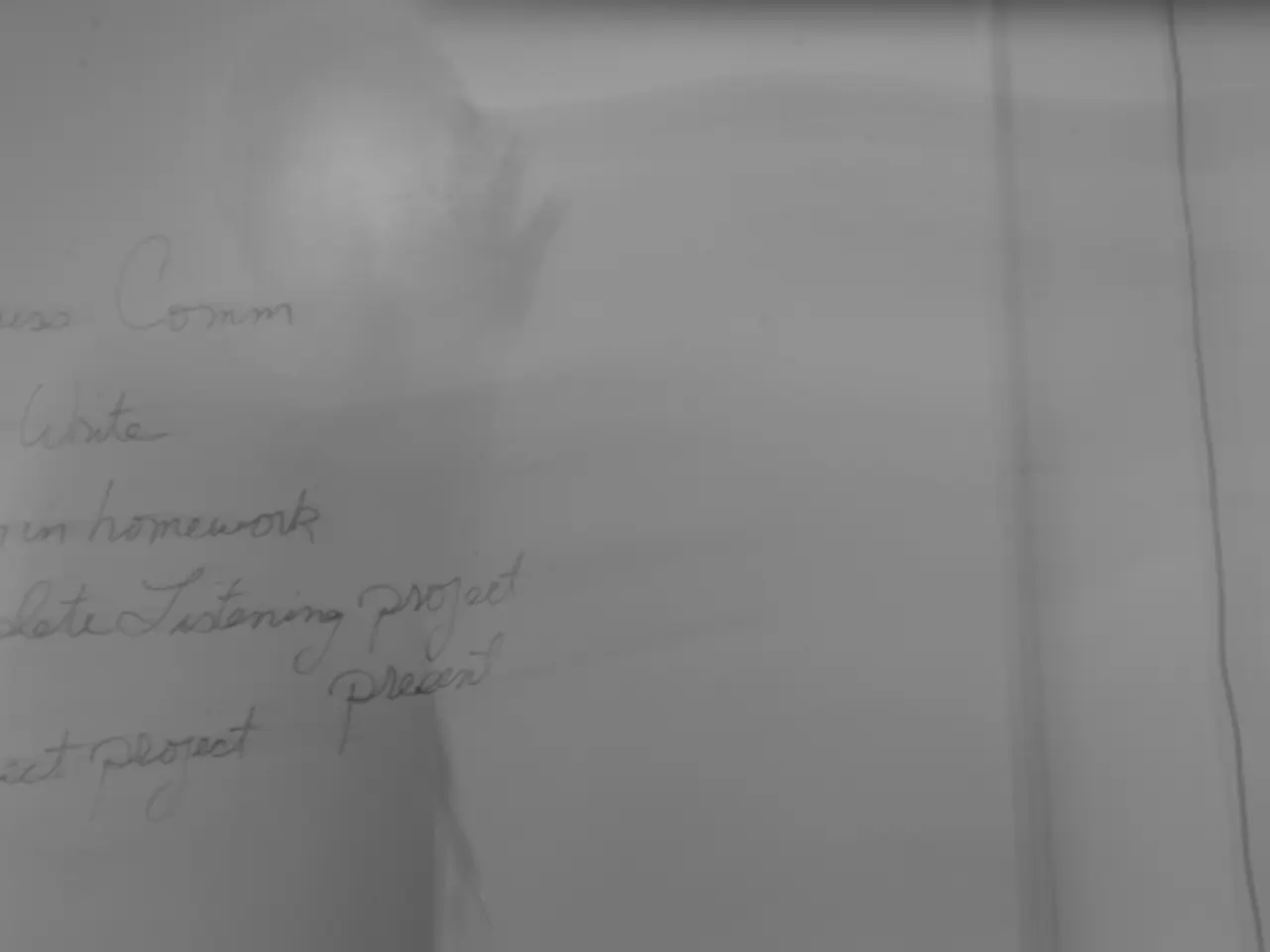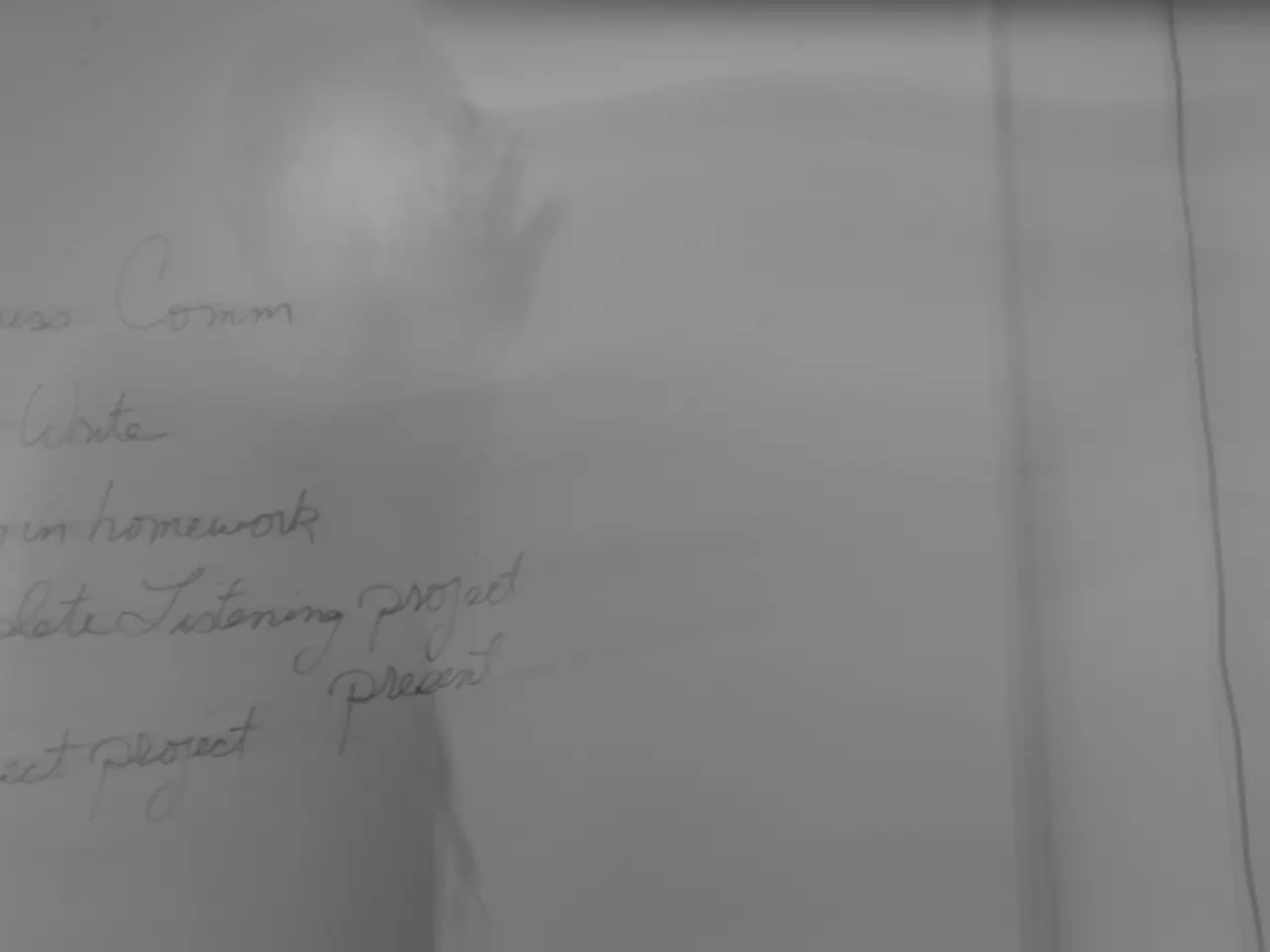BASF Releases Financial Summary for the Initial Half of the Year - BASF Releases Financial Statement for the First Half of the Year
BASF, the German chemical conglomerate headquartered in Ludwigshafen, has published its financial report for the first half of 2025, shedding light on the challenges faced by the chemical industry and the company's strategies to navigate these turbulent times.
The report reveals a decline in EBITDA before special items to €1.8 billion in Q2 2025, a drop from €2 billion the previous year. This decline is reflected in the adjusted full-year EBITDA forecast, which has been revised down from the prior range of €8.0 billion to €8.4 billion to €7.3 billion to €7.7 billion.
Sales in the first half of the year were nearly stable but slightly decreased to around €33.2 billion. While volume growth helped keep sales close to last year’s level, price declines in several segments, such as Chemicals, Industrial Solutions, and Materials, had an impact. However, segments like Agricultural Solutions, Surface Technologies, and Nutrition & Care showed earnings growth and volume increases.
The report attributes these challenges to lower prices, ongoing global overcapacity, declining volumes in some divisions, and macroeconomic and geopolitical uncertainties, which have led to weaker expected growth in all major regions for H2 2025.
In response to these challenges, BASF is implementing a cost-cutting program targeting €2.1 billion in savings by 2026. This forms part of strategic initiatives to maintain financial resilience. Currency impacts, competitive pressure, and inflation continue to affect margins, but BASF emphasizes the importance of its cost savings programs and operational efficiency improvements.
Additional highlights from the report include a net income for H1 2025 of €887 million, down significantly due to margin compression, and an EBITDA margin before special items in Q2 2025 falling to 11.2% from 12.1% a year earlier.
Despite these challenges, BASF has announced a new battery materials supply agreement with CATL, indicating strategic growth areas.
In summary, BASF’s first half 2025 financials show stable sales but declining profitability, with a lowered EBITDA forecast and active cost-cutting efforts to mitigate market headwinds such as price declines, currency effects, and geopolitical uncertainties. The financial report was published in response to these uncertainties and pressures, underscoring the impact they have had on BASF and the broader chemical industry.
- In light of the financial challenges faced by BASF and the chemical industry, such as price declines, ongoing global overcapacity, and geopolitical uncertainties, the policy within the community could consider implementing vocational training programs to boost the skills of its workers and improve their competitiveness in the industry.
- To sustain its financial resilience in the face of increasing costs and market volatility, BASF is seeking to secure funds through strategic collaborations, like the battery materials supply agreement with CATL, and could also explore financial solutions, such as partnerships with banks or investing in alternative financial mechanisms, like stocks or bonds for business expansion and operational efficiency.




